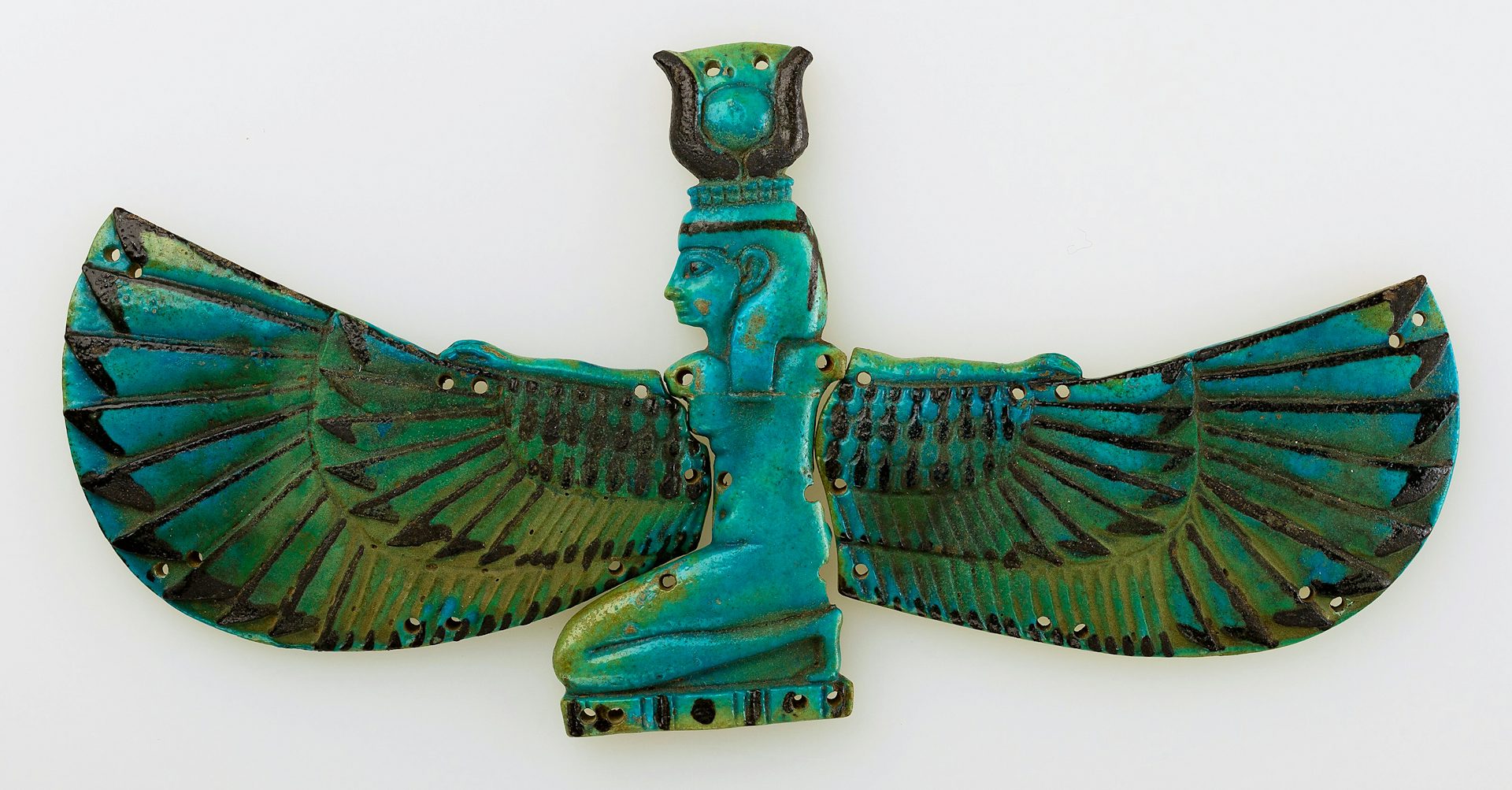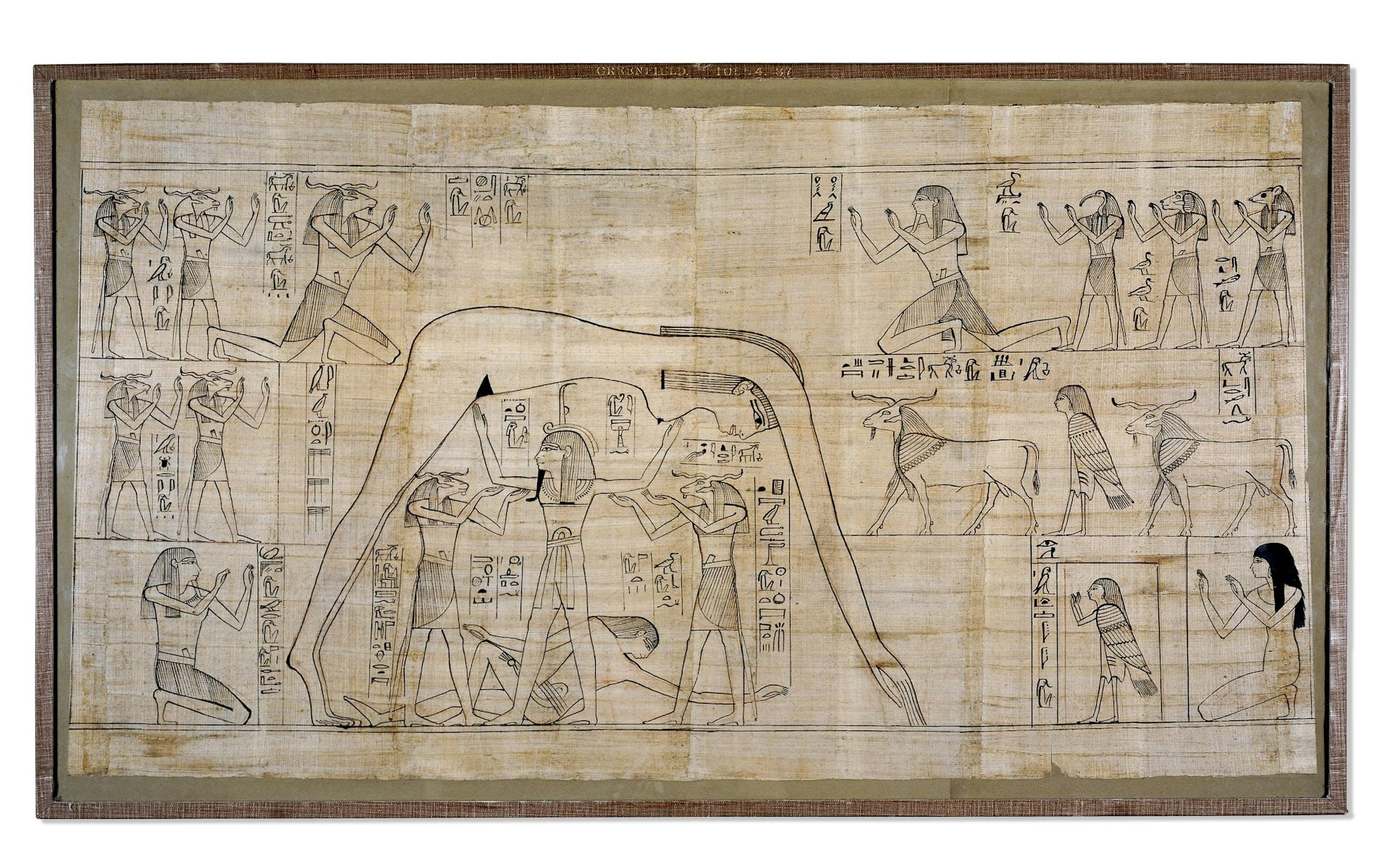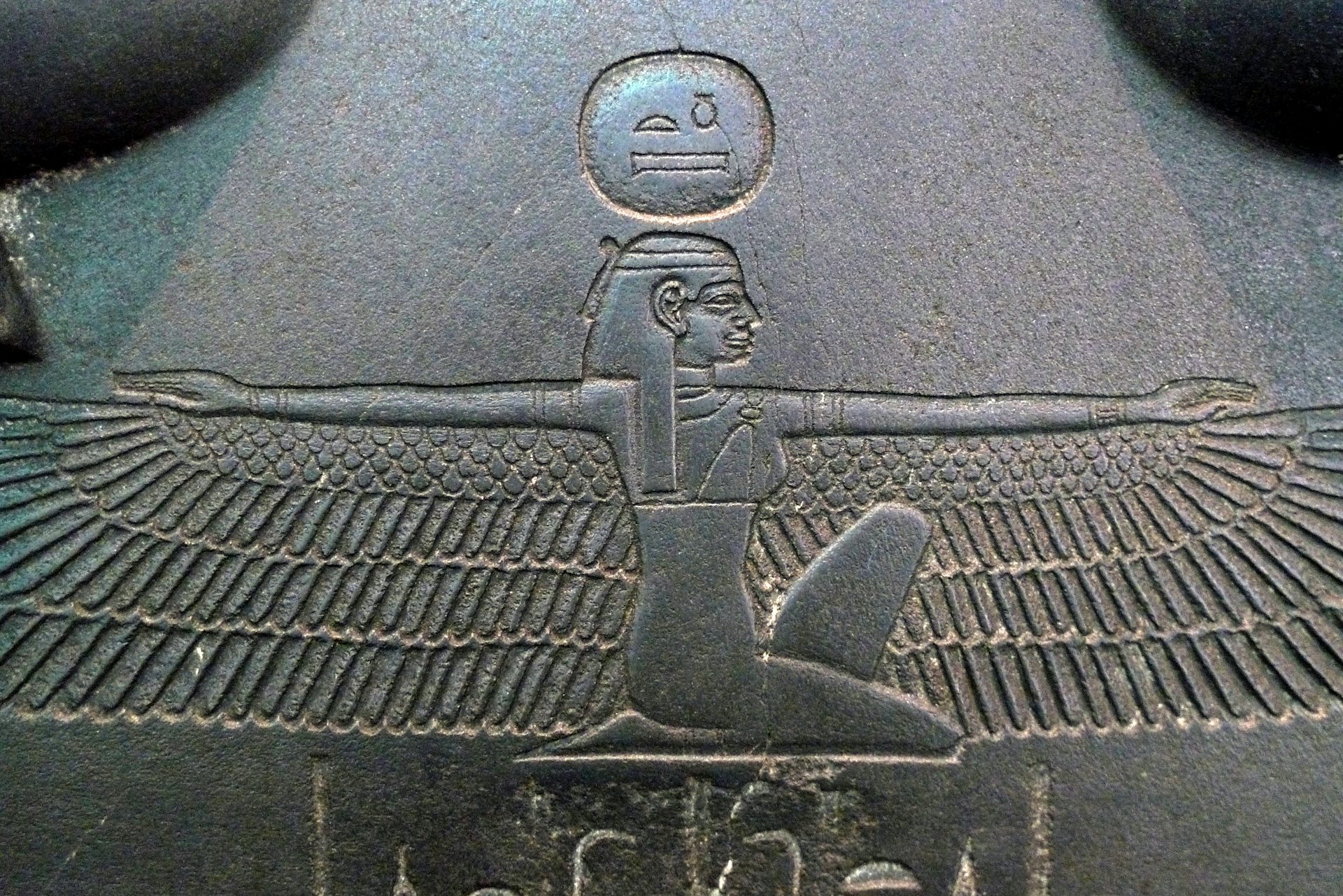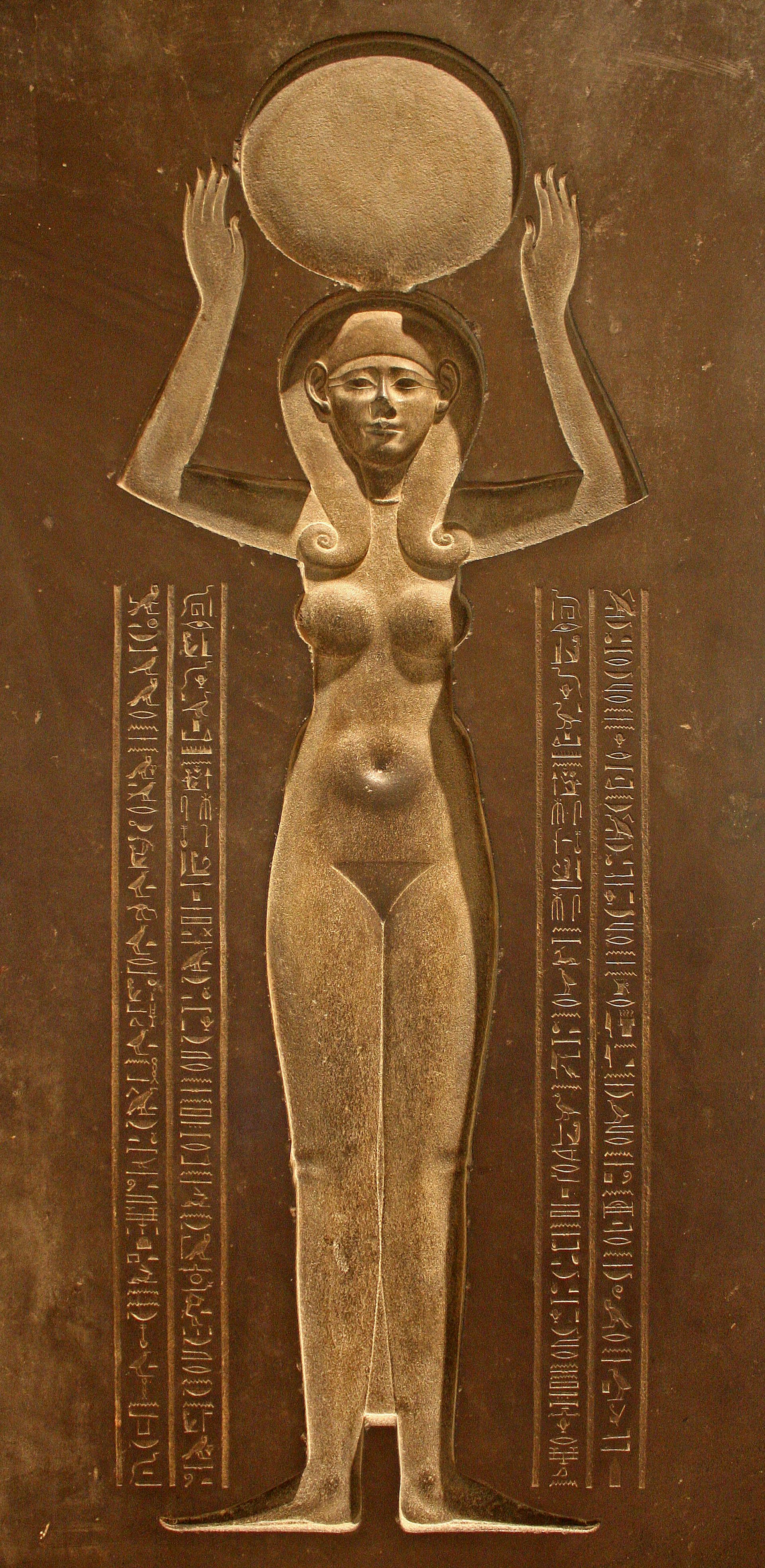Nut
Overview
Daughter of Tefnut and Shu, and granddaughter of Ra himself, Nut was the Egyptian goddess of the sky. In a reversal of mythological gendering tropes, her husband Geb was the god of the earth.
Nut was tremendously important to the ancient Egyptians, as she used her body to keep Nun’s crushing waters away from the earth’s surface.

This ceramic piece (c. 1295–712 BCE) may depict the winged goddess Nut. The outstretched wings are common characteristics of the goddess, as are the solar disk and horns. The small holes were likely incorporated so that the piece could be sewn or beaded to a mummy's wrappings.
The Metropolitan Museum of ArtPublic DomainEtymology
The name "Nut" (nwt) was derived from the Egyptian word nw, meaning water. The symbol for her name—a water pot—was usually positioned atop her head.[1]
Attributes
Nut was often depicted as a nude woman arching across the sky, with her hands at one horizon and her feet at the other. Her body was often covered in markings representing stars, and she was sometimes depicted with wings.[2]
Evidence suggests that Nut was originally the goddess of the night sky, and may have represented the Milky Way.[3] Over time, however, she took on a more general role and became associated with all skies, regardless of the time of day.
Family
Nut was part of the third generation of Egyptian gods. Her parents were Shu and Tefnut, offspring of the creator god Ra.

This scene from the Greenfield Papyrus depicts Nut arching over several figures, including her father Shu, who holds her aloft with raised arms.
The Trustees of the British MuseumCC BY-NC-SA 4.0As was common amongst the Egyptian gods, Nut married her brother, Geb. They had a number of children together, including Osiris, Horus the Elder, Set, Isis, and Nephthys.[4]
It should be noted that Horus was an additional child found only in Greek sources; Egyptian sources attributed only four children to Nut.
Family Tree
Mythology
Nut’s significance was hard to overstate. Not only did she conceive the final four members of the Great Ennead, but she kept the waters of Nun from drowning the world.
An Ennead was a group of nine gods in Egyptian mythology. Known as the Great Ennead, the Ennead of Heliopolis included the first nine gods: Atum-Ra, Shu, Tefnut, Geb, Nut, Osiris, Isis, Seth, and Nephthys.
Despite her somewhat tumultuous relationship with Ra, Nut assisted him with his ascension into the sky.
The Separation of Earth and Sky
When Nut and Geb were born, they held each other so tightly that Nut could not give birth to any children. Their father Shu eventually forced them apart to allow the next generation of gods to be born; some sources suggest he did so out of jealousy.[5]

On this carved sarcophagus (c. 600 BCE), Nut can be identified by the glyph above her head that bears the water-pot symbolizing her name.
John KeoghCC BY-NC-SA 2.0Following this separation, Nut finally bore the children she had already conceived. In ancient Egyptian cosmology, this myth explained the space between the earth and the sky.
The Nature of the Sky
For the Egyptians, Nut literally held the sky in place. Nut herself was held aloft by Shu, who was assisted by 8 heh-gods—two for each of Nut’s limbs.
Nut used her body to prevent the inert, primordial waters of Nun from crashing down to earth. These waters explained why the sky was blue, and why Ra’s solar boat could sail upon it.[6]
Overcoming Ra’s Curse
According to the Greek historian Plutarch, Ra expected Nut to be his wife. When he learned that she and Geb were sleeping with one another, however, he cursed her “that she should not give birth to a child in any month or year.”[7]
Thoth was quite enamored with Nut, and quickly came up with a solution: he challenged the moon to a game of draughts (checkers) and placed wagers throughout their match. When Thoth’s winnings eventually added up, the moon gave him 1/70th of her illumination as payment. Thoth used this surplus light to create five additional days at the end of the Egyptian year.[8]
These five days—referred to as epagomenal days—were not a part of any month and as such, Ra’s curse did not apply to them. This loophole allowed Nut to bear her children at last.
Helping Ra Ascend Into the Sky
There came a time when Ra decided to abdicate his throne and ascend into the sky. Old and feeble as he was, however, the sun god required some assistance. Nut was surprised when Nun directed her to let Ra sit on her back, for the sun god was too large a burden for her to bear.
Upon explaining her concerns to Nun, Nut found herself transformed into a cow. In this new form granted by the primordial waters, Nut was able to support Ra with ease.[9]

This engraving on the sarcophagus of Djedhor (378-341 BCE) features Nut lifting the sun into the sky.
Franz VanderwalleCC BY-NC-SA 2.0The Book of Nut
Until recently, The Book of Nut was the name given to a collection of astronomical texts dating back to the 12th Dynasty (1991–1802 BCE). The collection’s name stemmed from several copies of the text bearing the classic image of Nut spanning the sky.
In 2007, Alexandra von Lieven discovered the original title in a fragmentary text not previously considered part of The Book of Nut. The title, snč šm.t n.t sb3.w, translates as The Fundamentals of the Course of the Stars.[10]